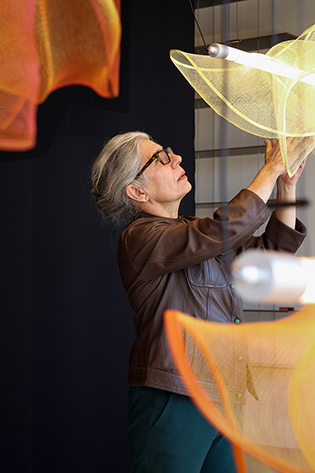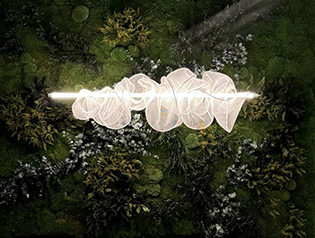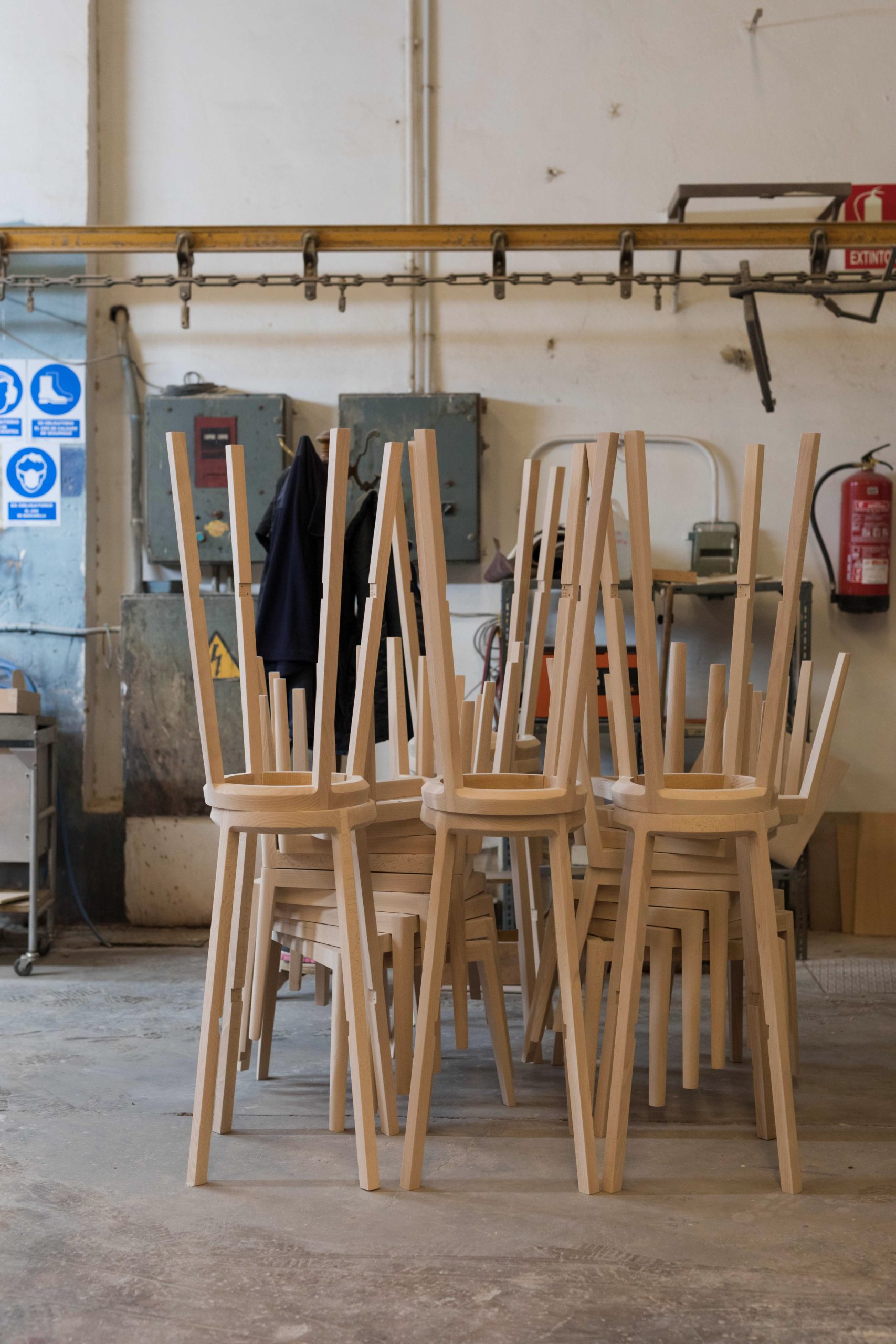
There is something uplifting in the fact that for a great number of people the kitchen remains a social hub, a place where family and friends gather to cook, connect and chatter. In this 21st century digital age, the kitchen and dining table are important communal assets as people increasingly adopt individualist tendencies.

Nicole Bruch of German interior design studio Nicoladenseiten, thinks of the kitchen as a “pleasure temple”. The studio’s kitchen design for a property in Köln, Germany, is a social and personal space in which to cook and bake, spending time with others or enjoying a moment alone. In what is a relatively minimal and contemporary design scheme, the one highly conspicuous feature is the colour orange. A bright and fun hue, Nicoladenseiten chose orange for Ray Power’s award winning Link pendant from LZF and tangerine for Danish designer Verner Panton’s classic Panton Chair from Vitra.
A mix of red (considered a physical colour) and yellow (an emotional colour), orange is regarded as a colour that focuses the mind on physical comforts such as food and warmth, as well as emphasising sensuality and fun (Source: Colour Affects). The bold use of orange in this Köln kitchen has been carefully thought about, with the designer minimising any excessive use. Too much orange would suggest an air of superficiality, in essence quashing the desire to encourage a safe and convivial social space.
Choosing orange for the LZF Link pendant shows the lamp in a striking, zestful and eye-catching form. Suspended above a rustic table, the light commands the physical space, its intricate and three-dimensional handmade wood veneer shade expressing a real dynamism. The orange Link pendant and tangerine Panton Chairs set each other off, in a manner which cleverly demonstrates the happy relationship that exists between contemporary and midcentury design. Given Verner Panton’s passion for colour and futurism, he would doubtless approve of LZF’s handsome Link pendant in the company of his consummate chair design.
















